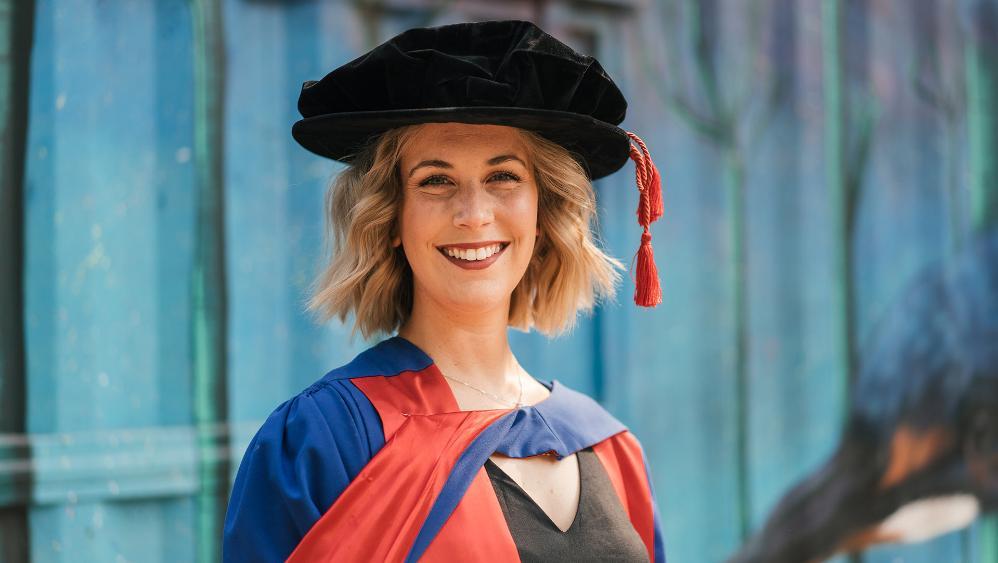December 20, 2019
Medical physics a rewarding path for UOW graduate
PhD research focuses on delivering optimal cancer treatment
A University of Wollongong (UOW) physics PhD graduate has made significant inroads in the delivery of radiation therapy, a main form of cancer treatment.
Dr Lauren Bell has become a Doctor of Philosophy for her study into quantifying, minimising and managing tumour volume uncertainty for the benefit of radiation therapy cancer patients.
During her PhD, Dr Bell drew on the expertise of doctors to develop an automatic computer program which outlines regions of cancerous tumours.
Dr Bell will celebrate her graduation at UOW on Thursday, 19 December.
From a young age, Dr Bell wanted to make an impact in the medical field. In high school she aced maths and science subjects, so when the opportunity to study medical physics at UOW presented itself, she knew she had found her calling.
“When my sister was young she had leukaemia,” Dr Bell said.
“I’m sure my experience with Rachael being in hospital led me in that direction.”
She passed her Bachelor’s degree with flying colours and before Dr Bell had completed her PhD, initially funded by a government scholarship, she had landed a job at Wollongong Hospital in her field of choice. Since 2016, while doing her PhD, she has been training to become a clinical physicist, which involves work with radiation therapy machines.
She has found research to be particularly satisfying.
“In comparison to traditional physics you can see the real world applications immediately with medical physics,” Dr Bell said.
“Part of my PhD can have an immediate impact.”
Dr Bell developed tumour contouring tools by observing specific cases of cervical cancer and breast cancer.
“Typically a patient will get a CT scan, and based on that a doctor will draw a digital contour which marks out a cancerous region,” she said.
“With that process there can be some variability depending on the doctor and other influencing factors.
“Radiotherapy plans tightly shape the dose around these tumour contours, so uncertainty in their definition have the potential to impact a patient’s treatment.”
Using auto-contouring and accounting for variability, Dr Bell established a general method which provides a map of the cancerous region based on the CT scan and previous doctor’s contours.
“Rather than drawing it from scratch, doctors can have that as a reference point,” she said.
Medical doctors can then go on to use this map of the tumour to administer radiation therapy, which uses x-rays to destroy or injure cancer cells so they cannot multiply. Radiation therapy can be used to treat the primary cancer or advanced cancer.
While it was incredibly satisfying to contribute to medical research, she also thoroughly enjoyed the social aspect of her PhD.
“I got to interact with a range of professionals, the treating staff, engineers and IT specialists, working for the most part in hospitals,” Dr Bell said.
“I was able to contribute to the field.
“It feels really, really good to be graduating officially. It’s been a long time coming.”
